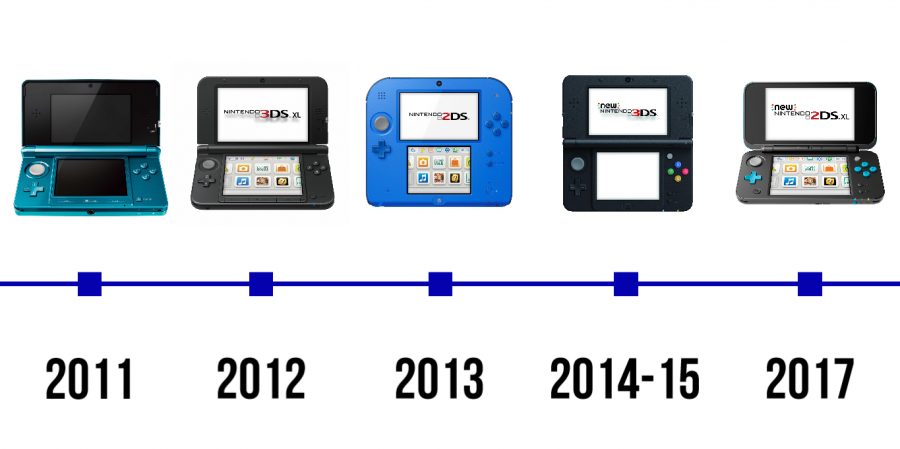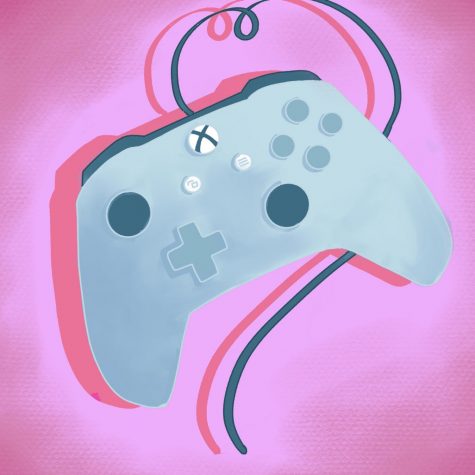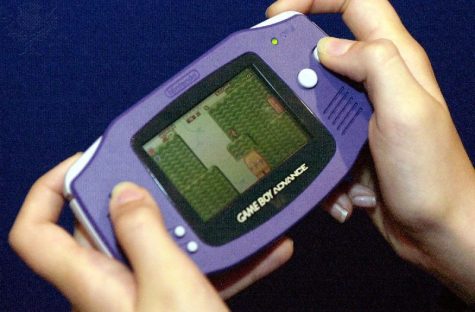The legacy of the 3DS
In the past eight years, the era of the Nintendo 3DS came and went. Launching first in Japan in February 2011 and March 2011 in the rest of the world, the handheld had a healthy start, selling 3.61 million units by March 31, 2011.
A shocking development not even a year into its lifespan, Nintendo announced the 3DS would receive a price cut. In American terms, it would go from 249.99 USD to 169.99 USD. This made the console more accessible, and compared to the period in July before the cut, there was over a two-hundred-sixty percent increase in sales following August 11, the day before the cut.
The cut really allowed the 3DS to boom for the rest of that year (selling 10.71 million units), and kept sales growing steadily for years until the advent of the Nintendo Switch. In total, the 3DS sold 75.28 million units as of June 30, 2019.
Now, let’s ditch the sales figures. There were more important things about the 3DS than just how much money it made, such as the host of built-in features or the extensive library it accumulated.
Since it is a part of its very namesake, we will begin with the stereoscopic 3D top screen. Initially, I was not immediately convinced of how impressive the effect would be before I got one. After using the system for years, however, my opinion has fully developed. I have found that the 3DS is definitely effective at conveying 3D without any glasses.
Most of the time, the 3D is not very integral to the game you are playing, though it is a nice addition to the visuals of every 3DS game. Sometimes, though less often, the 3D effect is utilized very well, either just by the merit of the effect being adapted very well to the game’s graphics, or the gameplay improving from the enhanced clarity of depth you attain.
I prefer to play with the depth slider all the way up, for the greatest possible effect. One thing about the 3D which I think is a missed opportunity is that the slider is not used to its full potential. I believe there could be multiple applications in gameplay for adjusting the 3D effect, or perhaps that is beyond this particular 3D function’s limits. Others report how the 3D effect can be disorienting to them, but in my experience the 3D has never done this to me.
Speaking of the 3D feature, the 3DS, like the DS, went through multiple revision models, including ones without the 3D function at all. Apart from the original 3DS, there was the 3DS XL, a larger version with larger screens. Then there was the 2DS, which as the name implies, removed the 3D completely. It also majorly changed the structure of the system, instead of having hinges to open and close, it was a flat slate design.
Moving to the “newer” designs, came the New 3DS and New 3DS XL. These models had several upgrades to the hardware. Extra shoulder buttons, labeled ZL and ZR, were placed on the back end of the system. An additional control stick on the right side of the system, now smaller and instead of detecting the direction you moved it, it reads the force you put on it. The systems had improved internal specifications, so they could handle games that would be difficult for a normal 3DS to run.
These systems also had face tracking built in to the inner camera to adjust the 3D to how you were looking at the screen. This sometimes felt like more of a sidegrade, since the 3DS will react to slight adjustments of your head and the effect will go out of focus for a second or two. They included a built-in NFC reader/writer under the bottom screen, allowing for amiibo (Nintendo’s line of figures which could interact with certain games) compatibility with the 3DS. These additions were welcome, in my opinion. I felt like I had a genuine reason to upgrade to one of these systems.
The final revision to the 3DS family was the New 2DS XL. This system had all the additional features of the New 3DS but no 3D. The overall design was also tweaked, and in my opinion, is the best-looking model of the 3DS. Perfect for someone trying to get into the 3DS, but for a long-time player like me, held almost no value over what I already had.
The 3DS’s user interface was also a step up from previous handhelds. There were blocks that represent games or apps. These blocks could be rearranged to suit the needs of the user, either by changing the position of blocks or creating more rows to fit more blocks on screen at once. A firmware update also introduced folders for easier organization.
In another update, you could download themes (some free, some paid) for your menu based on game titles or game characters. This UI was always simple and effective at what it needed to do. The only complaint I could have had was fixed when folders were added.
The main menu, also called the home menu, is accessible at almost any time just by pressing the associated button on the console, pausing any instance of a game or app and being resumable from exactly where you left off. The only exception to this is if you go to the home menu while you are connected to another system through wireless play.
Just having the option to pause what you are doing in a game at any time no matter what game it is was a game-changer, to me. It made dropping whatever game you were playing so convenient it felt like pausing was inconsequential. The slow transition in and out of whatever game you were playing gave you a short moment to get into or out of the frame of mind of the game.
The multitasking features of the 3DS were numerous. These were available to be used from the home menu any time, even while software was suspended. There were notes you could write using the touch screen, a friends list, notifications, an internet browser, and Miiverse. Once again, having these as an option is already great, even if you do not always get a ton of utility from them.
In my opinion, the most impressive of these was an internet browser. You could browse the internet straight from your 3DS, right out of the box, and there were no interruptions with whatever you might be running in the background. Though there were some limitations, as you could not modify the browser with extensions or plugins, and scrolling through web pages is not as efficient as you would on a desktop.
Miiverse, a social networking platform designed for use with Nintendo systems, was also noteworthy. It was viewable on this system and the Wii U, but was also available in web browsing. Users make posts expressing their thoughts and experiences of the games they play either through text, drawings, screenshots, or even videos. While a game was suspended, you could make a post in that specific game’s community with a screenshot of the game.
Miiverse was introduced to the 3DS a year after the Wii U launch of Miiverse. The game-integrated features of Miiverse were not present like the Wii U, but the unique joy that came with making your own posts and seeing others express themselves in various ways was still very much present. It is something Nintendo may not ever capture again.
Capturing photos was another function of the 3DS. Due to the dual cameras on the outside of the system, it was possible for photos to be taken and viewed in stereoscopic 3D, as well. There was also a gallery and editing capabilities within the camera application. When I first got my 3DS, this was a fun time, but I never got much mileage out of it. Do I think the 3DS needed a camera? No. Do I think the DS family of handhelds ever needed a camera? No. It was just one extra selling point they could put on the box to perhaps convince more people to buy it.
One more app the 3DS contained was a sound player and recorder. It supported mp3, mp4, m4a, 3GP file types. When the system was closed, music could continue to play using the headphone jack, and games that let you listen to music would also utilize this functionality. Audio files on the system’s SD card could also be played, meaning you could take any supported sound file from your computer and put it on the SD card and your 3DS would play it.
You could also record ten second voice clips using the built-in microphone. On top of this, audio editing tools for sound files and your own voice clips could be used. I may have never gotten much personal use out of this feature, but you could turn your 3DS into your personal music player, on top of it being a handheld game system, and to me that sounds pretty appealing.
The last and, in my opinion, most innovative feature the 3DS had to offer, was StreetPass. StreetPass allowed 3DS systems to exchange data so long as the system was kept on and the feature was enabled, and the systems were within a certain proximity. It was integrated into a large amount of the 3DS’s library of games, and was integrated in many unique ways. With StreetPass enabled, you could share high score data, custom characters or profiles, and receive bonuses.
There was even an entire app dedicated to the feature, that allowed you to see the Miis of the people you pass by, and use those Miis in games. StreetPass was always something fun and a nice surprise if, say, I had taken my 3DS on a long car ride and I randomly passed someone else. It was also nice if you had friends you met up with often enough that also had the system, and even better if you had siblings with a 3DS, too.
The 3DS did have one very important trait that any game system should never go without. A large library of quality games. Amongst the best-selling 3DS games, titles from the Mario and Pokemon franchise top the charts, to nobody’s surprise, along with Super Smash Brothers. Within the top ten, stand-out titles are Animal Crossing: New Leaf and Tomodachi Life, both life simulation games.
Numerous series still did rather well on the system, such as: The Legend of Zelda, Monster Hunter, Yo-kai Watch (a relatively new RPG franchise by developer and publisher Level-5), Dragon Quest (though this popularity was mainly Japanese), and Kirby. The 3DS also provided opportunities for some series to flourish once again, most notably being Fire Emblem, which was on its last legs until the breakout success of Fire Emblem: Awakening. Kid Icarus: Uprising, despite coming from a series that had been dormant for twenty years, roared to life on the 3DS.
That is only scratching the surface of the games available. In total, there are over one thousand three hundred 3DS releases. That amount does not include games that were released for the DS, which the 3DS is capable of playing, and games from the Virtual Console service that were from systems before the DS.
To speak from my own experience on the 3DS, I spent a lot of time playing games on this system. My 3DS was how I first got into the Fire Emblem series, strategy RPGs, which I have sunk many, many hours into. This handheld was my main channel for playing Pokemon. I have played Super Mario 3D Land to near perfect completion. I thoroughly enjoyed playing all the way through Kid Icarus: Uprising, with its entire pantheon of characters. Professor Layton vs. Phoenix Wright, a crossover game that brings two beloved mystery-solving and brain-teasing game franchises together was one of my personal favorites.
I spent a surprising amount of time living in my town in Animal Crossing: New Leaf. The quirky charm of Tomodachi Life and Miitopia, both games that use your own Miis as characters in the game, had me captivated. The two main Kirby installments and the handful of spinoffs released on the system were a great time. The 3DS’s version of Super Smash Brothers supplied me with many, many hours of fun gameplay and introduced me to many characters of series I may not have ever cared for otherwise.
When I upgraded to a New 3DS XL, it was largely in part to play one game in particular: Xenoblade Chronicles 3D. This was a very influential game for me. I do not think it matters who you are, Xenoblade Chronicles, in whichever form you play it (it is on the Wii, New 3DS, Wii U eShop, and a remaster is coming to Nintendo Switch next year) is worth playing all the way through. It is quite possibly the best game I have ever played.
I got so much use out of my 3DS. It may just be my most used game system, to this day. On top of that, I still have games I have not finished. The 3DS made long car rides a joy. I do not think I could list the amount of times I was glad I had it with me.
The 3DS defined handheld gaming for almost a decade. It was the main reason Nintendo stayed in the running even after the Wii U performed poorly. Dedicated handheld developers and gamers paved the way for the Nintendo Switch to eventually take over Nintendo’s home and portable sectors. Many were introduced to gaming through the 3DS, and many were reintroduced as well. This system was another chapter of gaming history that is now coming to a close.

Daniel Fosselman is an editor for the RBHS Clarion. He only just became an editor in January 2020, but he is already spearheading a movement within the...











